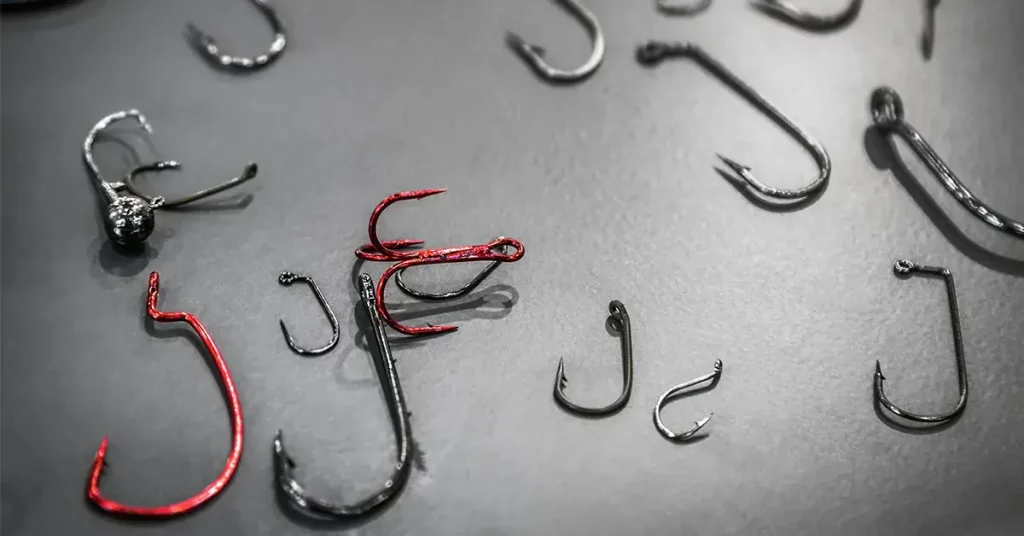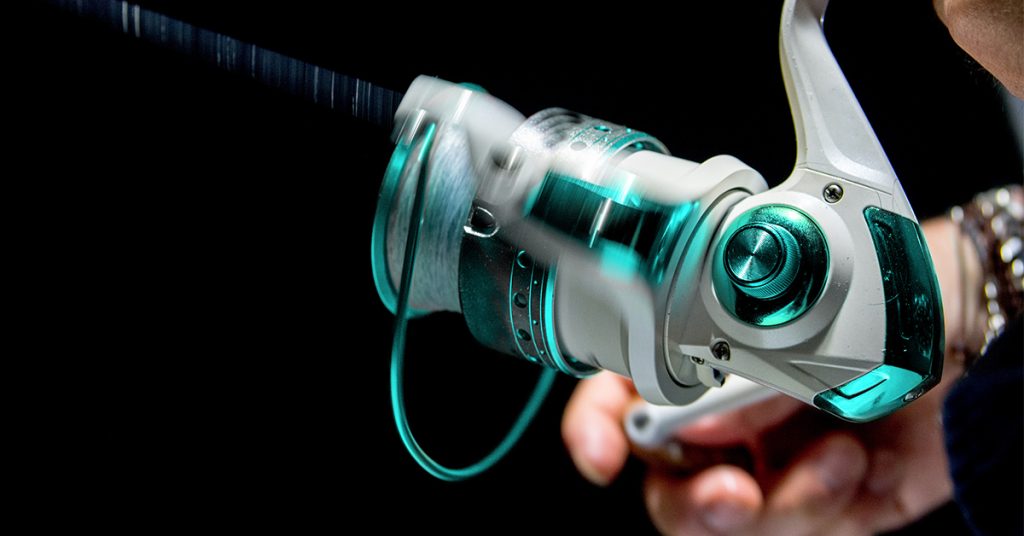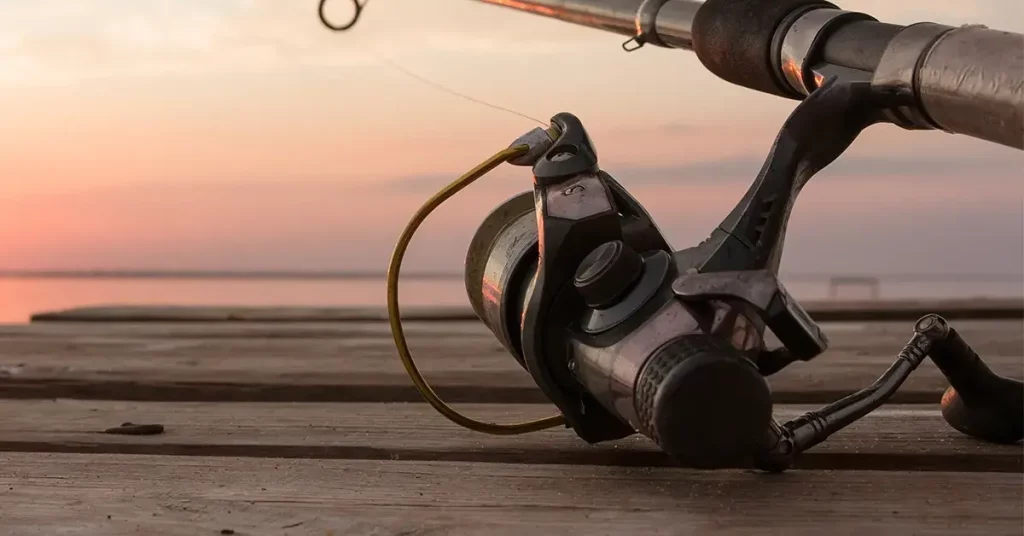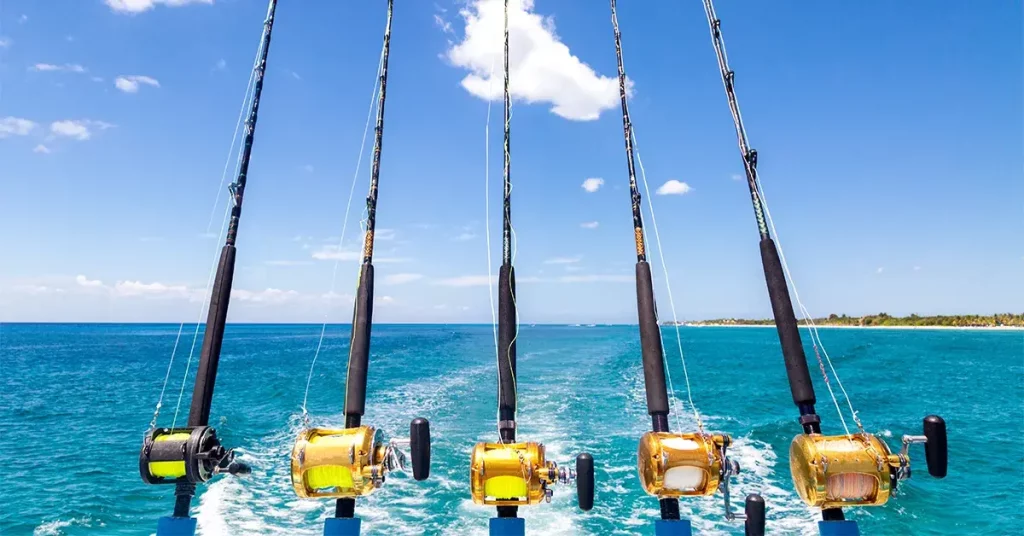Fishing hooks might not appear that complex, after all how different can these little barbed pieces of metal be? Well, the reality might surprise you. There is a tremendous amount of complexity and variety when it comes to fishing hooks, so a thorough fishing hook guide is certainly merited.
Gaining an understanding of the different fish hook types will give the upper hand when it comes to picking the right tool for the job. You’ll be able to pair the right hook to your target species and fishing technique, resulting in more fish landed!
In this fishing hook guide, I’ll break down the terminology, variety, and features you need to be aware of when making the right fishing hook choice.
Parts of a Fishing Hook – Guide
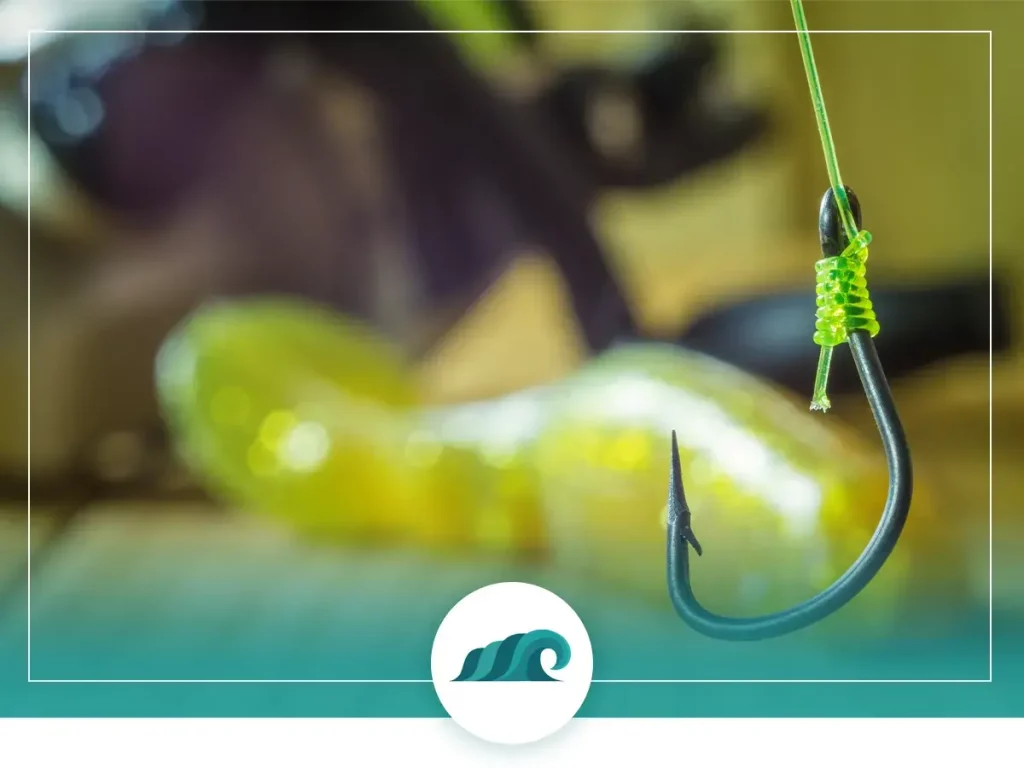
While fishing hooks can vary significantly in designs and use cases, they all share a few common characteristics. Before you get into the minutia, it’s important to have a basic guide to the parts of a fishing hook.
Point
The point – like the name suggests – refers to the sharp point at the very end of the hook. Points are the part of the hook that pierces through a fish’s lip, so it’s important to keep them sharp. We’ll dive into the various point designs further below.
Eye
The hook eye is the attachment point where the hook attaches to your line or a lure. Hook eyes, like points, come in a variety of different designs intended to be used for different fishing tasks.
Shank/Throat
The shank refers to the long section of the hook between the eye and where the hook begins to bend. This section serves as the backbone of the hook, providing it with the strength needed to handle a thrashing fish. Traditional fish hooks feature straight shanks, although there are also many designs that feature curved shanks.
The throat is similar to the shank but is located between the point and the bend.
Gap
The gap refers to the distance between the point and the shank. The length of this gap will vary depending on the hook’s size – larger gauge hooks have significantly more gap than smaller ones.
Curved shank hook will also have larger gaps than straight shanked hooks. Hooks with wider gaps are often used when you need your bait to move freely and appear lively.
Bend
The bend, as you might expect, is the curved portion of the hook that spans the distance between the shaft and the throat. The bend is typically symmetrical, although it can also feature differently shaped curves.
Barb
Lastly, the barb is the section of the hook which prevents the hook from coming loose once it’s penetrated through a fish’s lip. Not every fish hook has a barb – there are also barbless hooks with are commonly used in fly fishing.
Hook Point Types
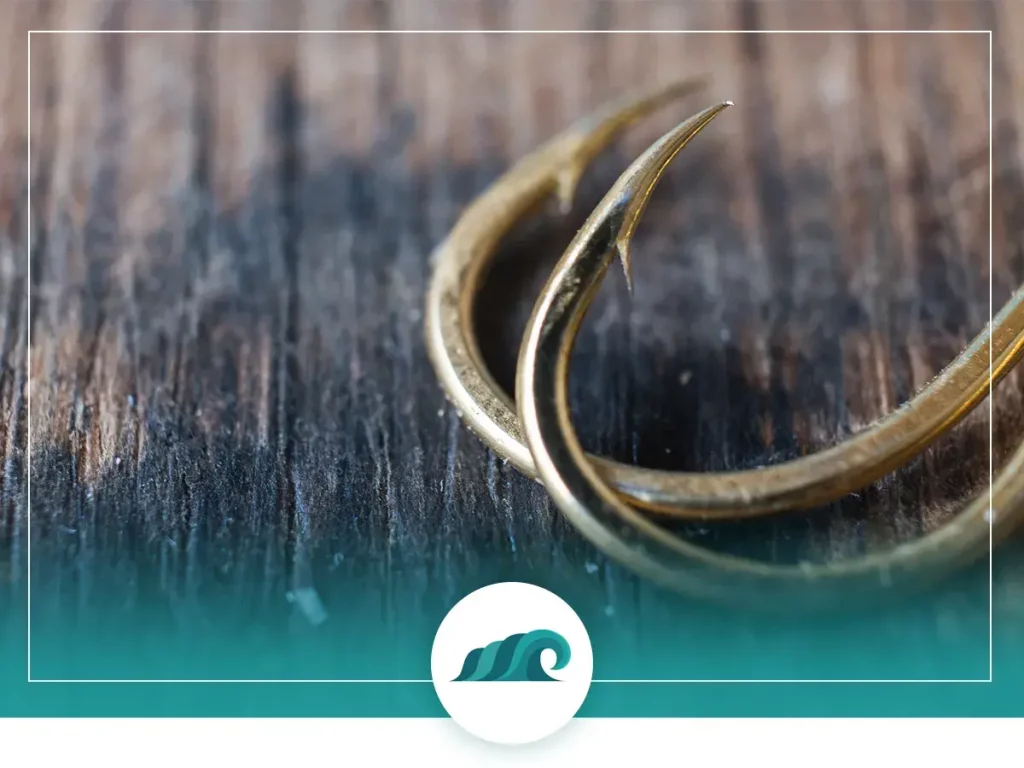
You might think that all hook points are essentially the same, but this couldn’t be further from the truth. Just like fish hooks, hook points differ significantly in design and functionality.
Let’s take a look at some of the different hook point designs.
- Needle Point: Needle points taper inwards, creating an easy penetrating point that’s thin, strong, and difficult to bend.
- Spear Point: Spear points feature a flat ground point that runs in-line with the throat. These points are probably the easiest to sharpen and make great all-around fish hooks.
- Rolled in Point: Rolled in points are similar to needle points, but feature a tip that ‘rolled in’ towards the shank. This creates a razor-sharp point that can pierce through a fish lip with incredible force and efficiency.
- Hollow Point: Hollow points are sort of a cross between needle points and spear points. The bend towards the end of the point creates an effective, easy penetrating point.
- Knife Edge Point: Knife edge points are significantly different than other hook points. They feature sharpened edges on both sides and an end that points away from the shank. Knife edge points are often used when fishing for hard-mouthed fish that require more penetration. These tips are incredibly effective but can cause a large degree of damage to a fish.
- Barbless Hooks: Barbless hooks can take any of the above shapes, but will lack the barb.
Fishing Hook Sizes
Fishing hook sizing can be a little confusing – especially for beginners. While it may appear difficult to understand, fishing hook sizes are actually quite straightforward.
Hook sizes start out at 1 and 1/0. The sizes followed by a zero, are pronounced ‘aughts’.
Sizes with a ‘/0’ after them increase in size as the number increases, while sizes without a zero after them decrease in size as the number goes up.
So, for example, a size 3/0 is larger than a 2/0, which itself is larger than a size 1/0. A size 3 hook is smaller than a size 2, which is smaller than a size 1.
Unfortunately, not all manufacturers’ hook sizes will correspond perfectly with one another. So, a size 6/0 hook with one manufacturer, may be closer to a size 5/0 with another. Sizing within a single manufacturer will generally be standardized.
When you’re talking about treble or double hooks, the hook size refers to the size of a single one of the hooks.
Fishing Hook Types and Their Uses – Guide
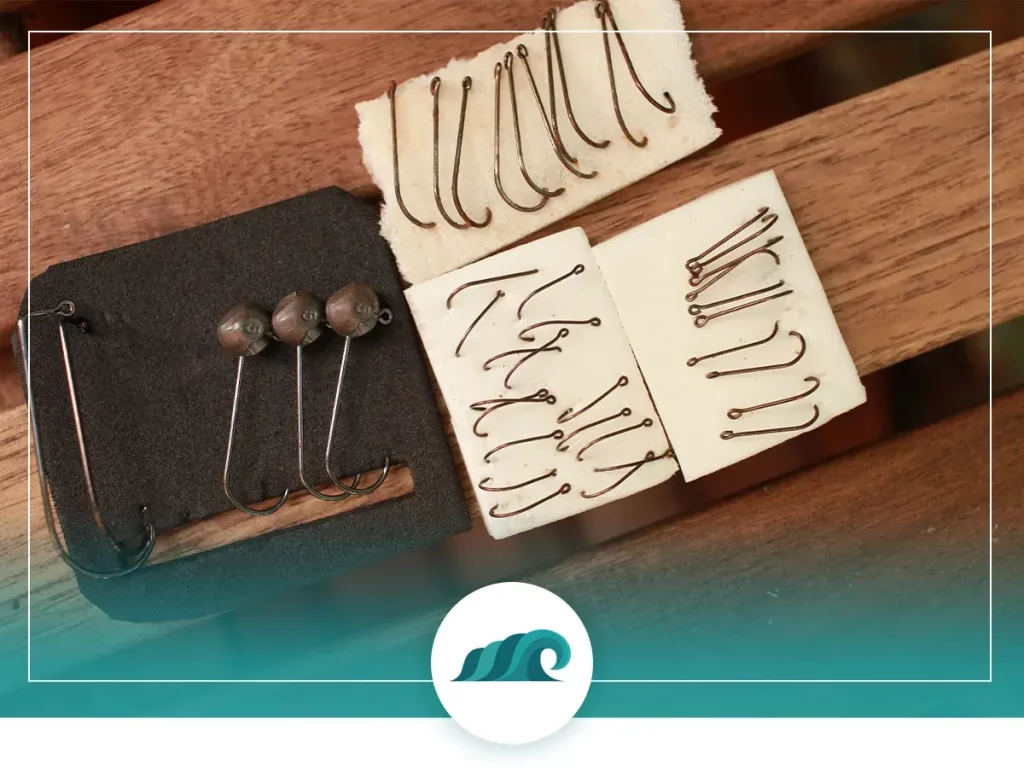
Anyone who’s spent a significant amount of time looking at fishing hooks knows just how many different types there are. Manufacturers have come up with literally thousands of different designs, for everything from fly fishing to landing blue water monsters.
Let’s take a look at some of the most common types, which every self-respecting angler should have in their tackle box.
Baitholder Hook
This one’s purpose is essentially self-explanatory. Baitholder hooks are hooks designed to keep your bait kept in place, so it can’t slide off the hook, or be stolen by sneaky fish!
They typically feature one or more small barbs on the shank (and sometimes the bend) which prevents the bait from sliding off of your hook. Baitholder hooks are commonly used with a wide variety of live baits but work particularly well with nightcrawlers, leeches, grubs, and other insects.
Circle Hook
Circle hooks are by the most fish-friendly hook on the market. They feature an inward-facing point which essentially eliminates the possibility of gut hooking a fish.
As you pull on the line, the hook’s point slides forward until it reaches the fish’s lip. Once in position, it pierces through the side of the mouth.
Circle hooks are popular with saltwater anglers but are also increasingly gaining popularity among freshwater fishermen.
Octopus Hook
Popular among freshwater perch, bass, walleye, and panfish anglers, these hooks are ideal when you want to create as natural a presentation as possible. Octopus hooks are designed for live bait fishing with smaller delicate baits like minnows and leeches.
They feature short rounded shanks that help cut down on overall size. The point faces inward similarly to circle hooks.
Aberdeen Hook
Aberdeen hooks are another type of live bait hook. They utilize light wire construction to inflict minimal injury on your bait – which keeps it lively for longer.
Their lightweight wire construction means Aberdeen Hooks will bend rather than break, making them ideal for fishing in heavy cover.
Weedless Hook
Another hook that excels when fishing in heavy cover, the weedless hook features a thin guard that clips between the eye and the point. This acts to keep vegetation from getting caught in your hook but is lightweight enough to allow a fish to take your bait.
Siwash Hook
Siwash hooks are often used on single-hook baits, or as an alternative to factory-provided treble hooks on a wide variety of lures. The single hook with a long shank and a straight eye makes them versatile enough to replace most treble hooks – which can be particularly useful when fishing in areas with restrictions on treble hook usage.
Treble Hook
Treble hooks are a highly effective hook that feature three separate hook point attached to a single shank. The multi-point design makes them highly effective at hooking fish – but also increases the odds of accidental injury to the fish or yourself.
Treble hooks are commonly found on artificial lures like spoons, crankbaits, and topwater lures. They’re also highly effective when fishing with live bait.
Jig Hook
One of the most commonly used hooks by all types of anglers, the jig hook features a 90-degree bend right below the hook eye, which increases the hook-up percentage.
Jigs eye hooks are commonly used in conjunction with jig specific jig heads. Jig heads can feature a huge variety of colors and patterns, and you can even create your own jig eye with a jig-head mold.
Worm Hook
Worm hooks – like the name suggests – are hooks specifically designed to be used with soft plastic worms. They’re a favorite among bass fishermen, as it allows the worm to hang freely and move naturally in the water.
The versatile design allows you to rig the worm in a variety of different ways and can be used in heavy cover like weeds, timber, and heavy vegetation.
Other Hooks
The above hooks are by no means a comprehensive list, as there is a massive number of hooks out there, with new ones being designed and manufactured every year!
If you’re interested in a more comprehensive fishing hook list, check out this well made list.
Hook Material
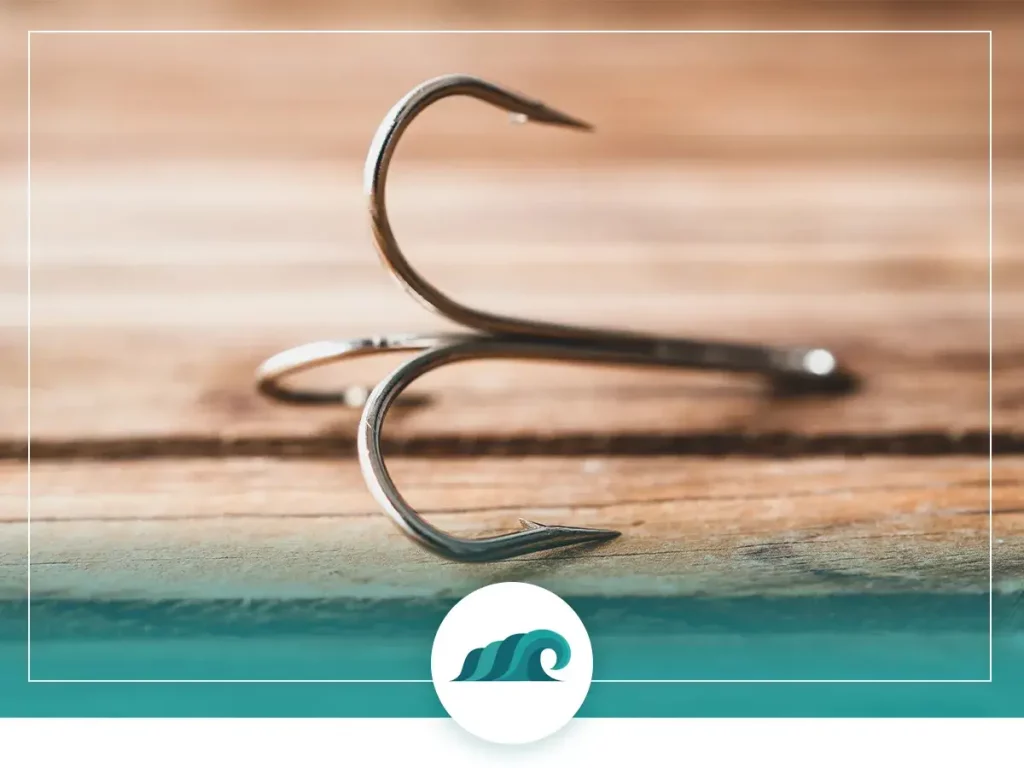
Humans have been utilizing fish hooks to catch fish for an astonishingly long time. In fact, fish hooks made from wood, bone, horn, and other materials have been found dating back to 7000 BC.
The majority of modern fishing hooks are made from some form of steel. The steel can vary from high carbon to different alloys or it can be stainless steel.
Hooks designed for saltwater fishing often feature some type of corrosion-resistant coating. Freshwater hooks also often feature a protective or aesthetic coating, although corrosion is less of an issue for freshwater fishing.
While stainless steel is sometimes used in fishing hook construction, it has the disadvantage of never rusting. You might be asking, how is that a disadvantage?
Well, if you happen to gut hook a fish or a fish escapes with your hook embedded in its lip, it won’t corrode and disappear over time. This can lead to infection and death for the unfortunate fish. One way to avoid this is with a good fish hook remover. These tools allow you to remove gut hooked and deeply embedded hooks, so the fish won’t need to suffer unnecessarily.
Hopefully, this fishing hook guide has given you a better understanding of the types, sizes, and uses for various fishing hooks.

